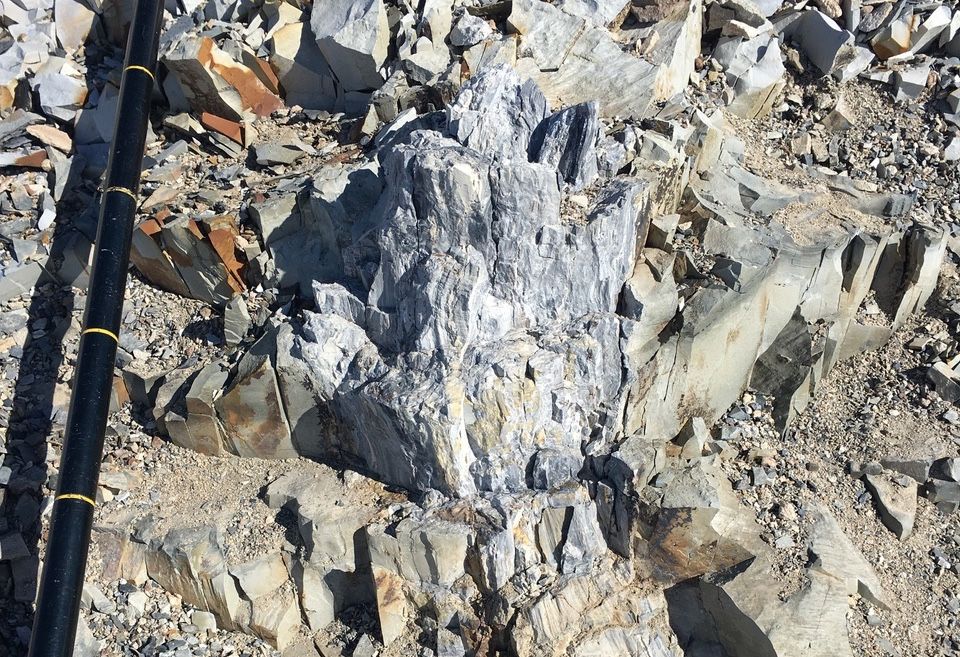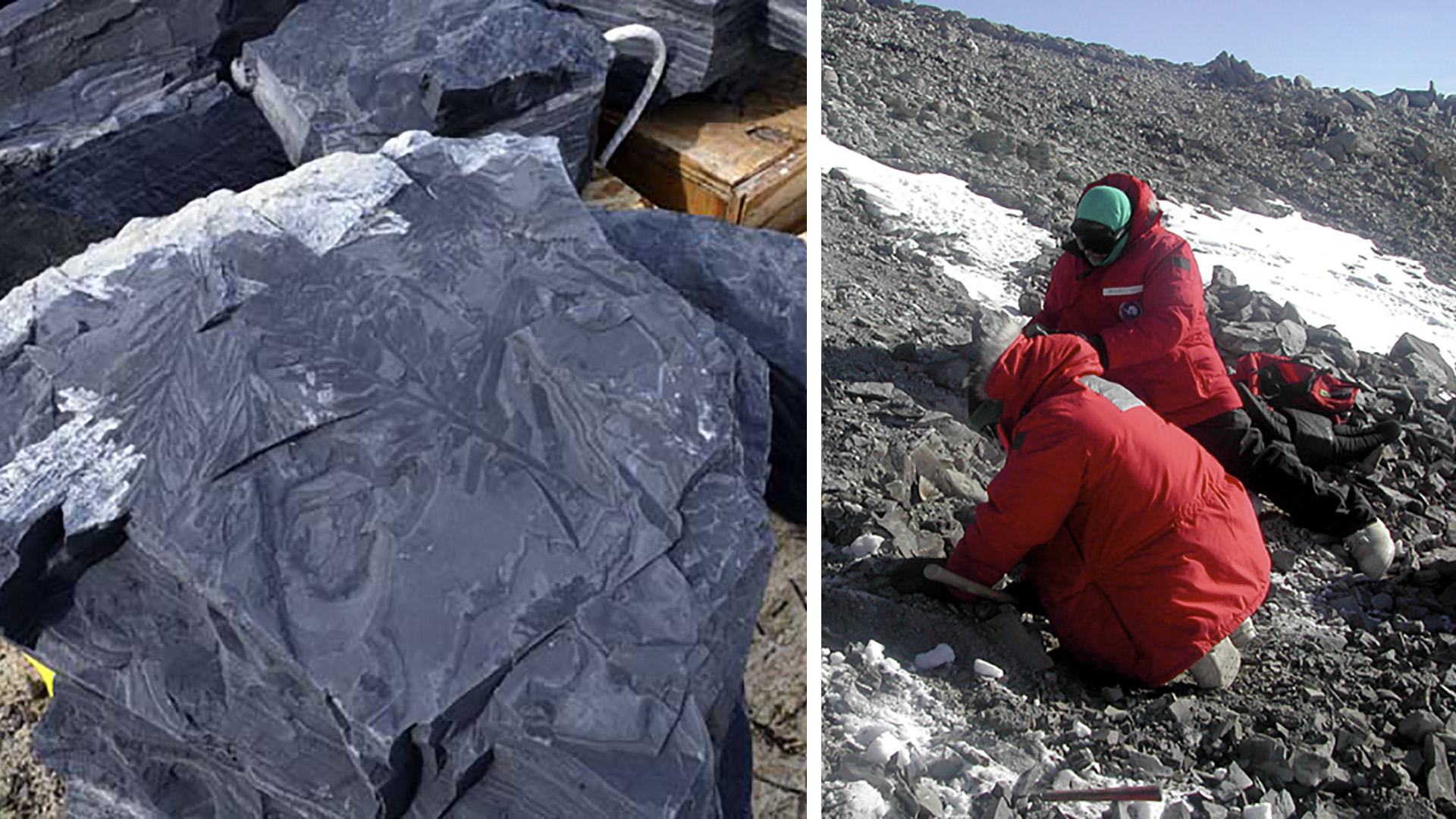A research team led by University of Wisconsin-Milwaukee paleoecologist Erik Gulbranson has found the fossil remnants of a Permian-age forest on the frozen slopes of the McIntyre Promontory in the Transantarctic Mountains.

Dr. Erik Gulbranson working in Antarctica. Image credit: Peter Rejcek, NSF.
The fossil forest dates back to the late Permian period some 260 million years ago.
“The Permian period ended 251 million years ago in history’s greatest mass extinction, as the Earth rapidly shifted from icehouse to greenhouse conditions. More than 90% of species on Earth disappeared, including the polar forests,” Dr. Gulbranson said.

“Because the Antarctic forests grew at polar latitudes where plants can’t grow today, we believe that the trees were an extremely hearty species and are trying to determine why they went extinct.”
Dr. Gulbranson and colleagues found the fossil fragments of at least 13 trees.
“This forest is a glimpse of life before the extinction, which can help us understand what caused the event. It can also give clues to how plants were different than today,” he said.

At the end of the Permian period, Antarctica was part of the supercontinent Gondwana and was warmer and more humid than it is today.
There would have been a mixture of mosses, ferns and an extinct plant called Glossopteris, and it’s likely that this forest stretched across the entirety of the supercontinent.
“The fossil forests looked different than forests today,” Dr. Gulbranson noted.
“During the Permian period, forests were a potentially low diversity assemblage of different plant types with specific functions that affected how the entire forest responded to environmental change. This is contrast to modern high-latitude forests that display greater plant diversity.”

“This plant group must have been capable of surviving and thriving in a variety of environments.”
“It’s extremely rare, even today, for a group to appear across nearly an entire hemisphere of the globe.”
But not even these robust forests survived the high carbon dioxide concentrations of the mass extinction.
The resilient plants also must have survived through the polar extremes of perpetual light and total darkness. Even in a warmer past, the polar regions would have experienced months of darkness in winter and would have gone without sunset during the summer months.
By studying the preserved tree rings, the authors found that these trees transitioned from summer activity to winter dormancy rapidly, perhaps within a month.

Modern plants make the same transition over the course of several months and also conserve water by making food during the day and resting at night.
Scientists don’t yet know how months of perpetual light would have affected the plants’ day-and-night cycles.
“There isn’t anything like that today. These trees could turn their growing cycles on and off like a light switch,” Dr. Gulbranson said.
“We know the winter shutoff happened right away, but we don’t know how active they were during the summertime and if they could force themselves into dormancy while it was still light out.”
Source: sci.news








